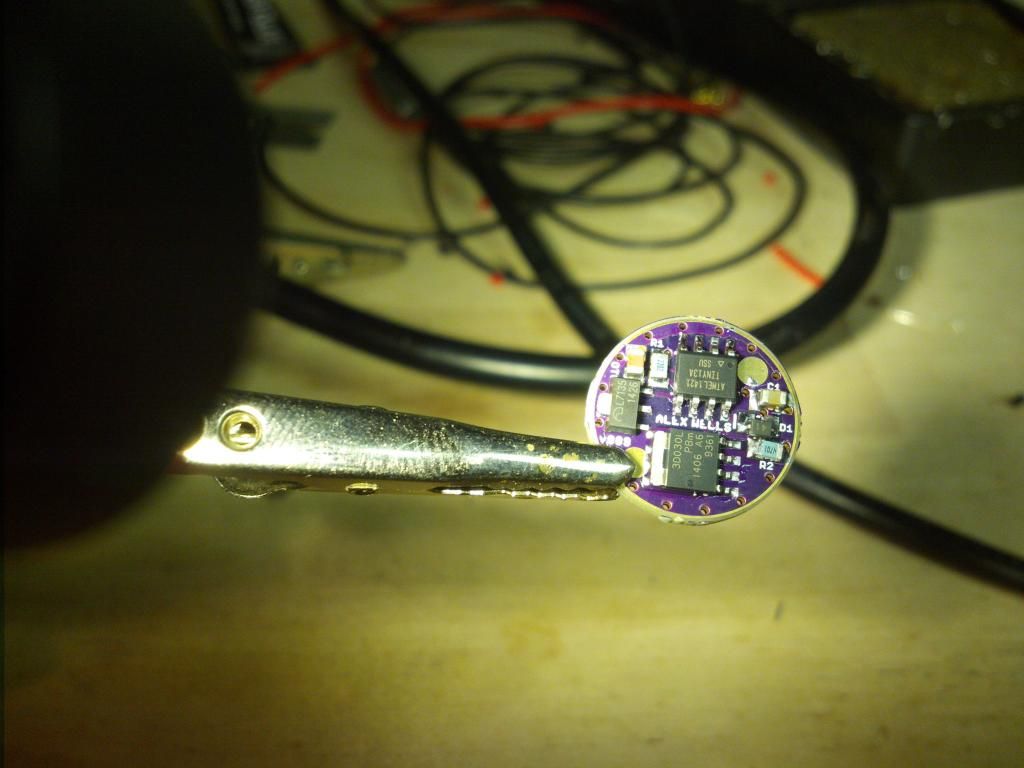Then you built the first one I’m aware of.
Can you post some pictures?
Is everything playing along with the dual PWM? (I don’t see why it wouldn’t.)
Then you built the first one I’m aware of.
Can you post some pictures?
Is everything playing along with the dual PWM? (I don’t see why it wouldn’t.)
As far as I can tell the dual-pwm is working fine.
Moon 2
Low 37
Med 40
with dual-pwm at 38.
Mode spacing appears to be very good set that way. I’ll build another today and post pictures, the first is in a triple XPL 3D Convoy S2 right now.
On this and on some of the DD18 SO8 drivers I am getting a buzzing on the two highest pwm modes, what normally causes that? All of the solder appears solid.
AFAIK the buzzing is something resonating. Tuning your PWM should help eliminate it. Change duty cycles (mode levels), PWM freq, or PWM type (fast/phase correct). The Dual-PWM functionality can split PWM types right in the middle of your mode group if you’d like, that may be able to eliminate the noise at the top end. That’s what’s going on with the “#define FAST_PWM_START”.
Looking forward to pics of your next driver build.
Picture of built driver.

Looks just like it’s supposed to! The SOIC clip fits nicely?
Yes, and I found a pwm setting that gets rid of the buzzing.
Fuses of 0x7a and 0xFF
F_CPU 96000000
Fast PWM above moon.
With the low fuse of 0x75 I was getting the buzz.
9.6Mhz is right on the ragged edge with a protection diode in place. Atmel’s datasheet shows that up to 10Mhz is OK for 2.7-5.5v, but the diode drops around 0.2v or more. So at 2.9v the ATtiny13A sees 2.7v. There may be other considerations that push you over the edge in certain circumstances.
In other words if it’s possible I’d try and stick to 4.8Mhz rather than 9.6Mhz, just to have all your bases covered all the time.
What offtime values are you using and how much time is it taking to save?
I am using the default star offtime values.
In terms of voltage, are you saying I’ll lose the attiny once the voltage drops low enough?
I’m saying that it may malfunction once voltage drops low enough. There will be no damage to the driver, but it’s anybody’s guess what could happen. LVP could fail, that would be my primary concern.
How many seconds does the driver take to save the last used mode?
A mental count of six seconds. Five and it goes to the next mode when turned back on.
Are there magic values for PWM and 4.8 to have no buzzing? My medium at 40, and high at 125 buzzed at 4.8 and fast pwm.
No magic values AFAIK. Resonant freq depends on hardware, variables. You’re using Fast PWM?
EDIT: I forgot to address the offtime thing. Crank it to around 240 and see about that. Generally nice offtime should be memorizing things in <1s IMO.
I changed to 240, offtime is much quicker, thanks.
I tried fastpwm and phase correct, both had buzzing.
So a low fuse of 0x65 seems to work to get rid of the buzzing. Any bad side effects from that?
If I understand correctly, that will change the PWM speed to about 1.2 kHz or 2.4 kHz… which is much easier to see. Even 4.5 kHz bugs me; I can’t not see it strobing unless it’s at least 10 kHz or so.
But if it looks fine to you, then it sounds like you’ve found a solution.
Sorry, I don’t keep track of the fuses. Can you fill me in on how that is different from the normal low fuse we use?
This page indicates that the low fuse gives a 14KH pwm github
But your right, using the light to illuminate the shower shows the pwm pretty bad.
I wish mine DID whine, then it’d double as a mosquito repellent. ![]()
Hmm. I’m not positive, but I think if the PWM is really easy to see it’s probably not 14Khz.
I got the 1.2 / 2.4 kHz thing from the header comment in a STAR firmware file. I don’t know if it’s correct. ![]()
In any case, the shower is actually pretty bad at showing PWM. The reason is because water droplets change shape as they fall, and small droplets change shape very quickly. So, the droplets will appear to flicker even under a constant-output light.
To test PWM I recommend quickly waving a white notecard (or other thin white stiff sheet) through the beam instead. Here are a couple images showing 488 Hz PWM versus 4.5 kHz PWM:


These images fairly accurately show how the lights actually look to my eyes under regular use… but I’m unusually sensitive to the flickering.
Good images ToyKeeper. I missed your last post and was pretty confused about bdiddle’s post after that saying that someone was right. Hence my rather pedestrian response.
bdiddle… the current firmware can be confusing to setup. Please post (not here - use somewhere else like pastebin or whatever you want) examples of you the entire program you used with Phase Correct and then with Fast PWM. It’s reasonably possible that you were not actually making the changes correctly.